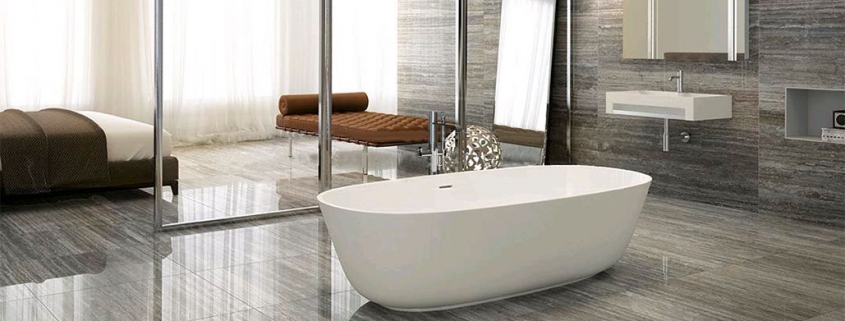What is Travertine?
Travertine is a sedimentary rock which texture has pores. This stone has unique features, therefore it is used both in the exterior and in the interior design of the building. The durability and longevity of this stone is very high, so most builders try to increase the useful life of their building by choosing travertine.
Application of travertine stone
Travertine stone is among the stones that are approved for use on the exterior of the building. What has made it a suitable example for the implementation of the facade of the building is the presence of voids behind it. This causes the mortar to adhere well to its back and be placed on the intended surface and prevent it from falling over time. Since this stone is highly polishable, it is also used in the construction of stairs.
Disadvantages of travertine stone
If travertine stone is used as flooring, its initial costs are higher compared to concrete flooring. In addition, the special colors and textures of this stone are more expensive than simple textures. It should be noted that travertine stone resources are not available everywhere and this stone can only be extracted from certain areas.
Advantages of travertine stone
- This stone does not absorb heat and its surface is always cool, therefore it is suitable for use in hot areas. This stone is used to create a cool feeling in the pool and bathroom.
- This stone does not have a polished surface due to high porosity, and its porous texture prevents slipping on it.
- The texture of travertine stone is unique and this is one of the advantages of this stone.
- The color of this stone is stable and does not fade over time.
- The most common travertine colors are suitable in terms of price in the market.
- This stone has high cutting and polishing capabilities.
- It is a type of insulation against sound and heat.
- This stone can be cut in wavy and non-wave form.
- The holes and pores in the travertine stone increase the adhesion of the cement mortar to the stone, as a result, the stone is prevented from falling and the installation operation is easier.
- The seams and cracks that can be seen in this stone are very few.
- Layering of travertine stone is done horizontally and with a low slope, so its extraction is easy and takes place in accessible and low-altitude areas.
- The pores in this stone increase its resistance to contraction and expansion.
- The travertine stone used for the facade of the building is resistant to sunlight and does not require maintenance. Only a surface wash can clean the appearance of this stone.










Leave a Reply
Want to join the discussion?Feel free to contribute!